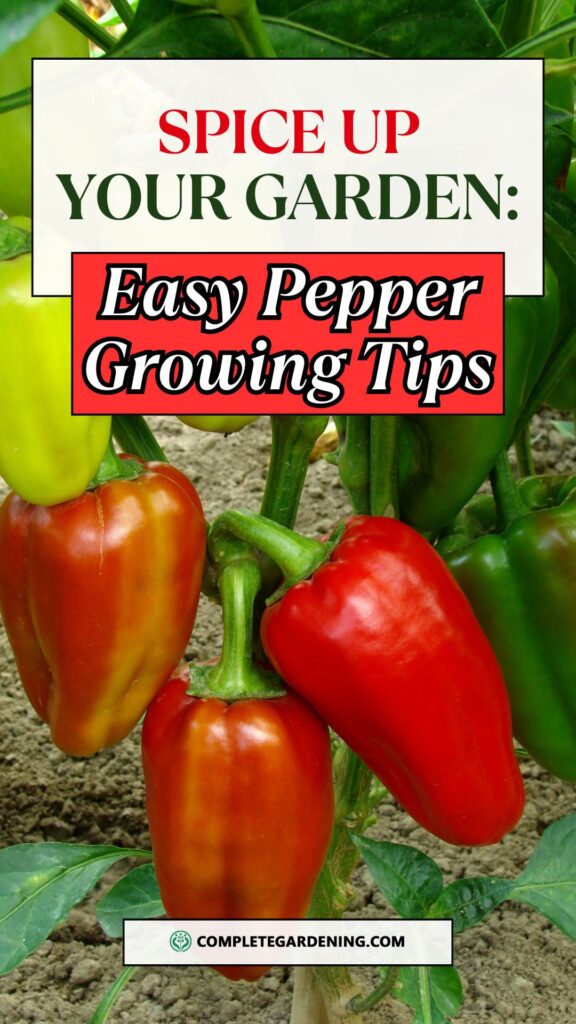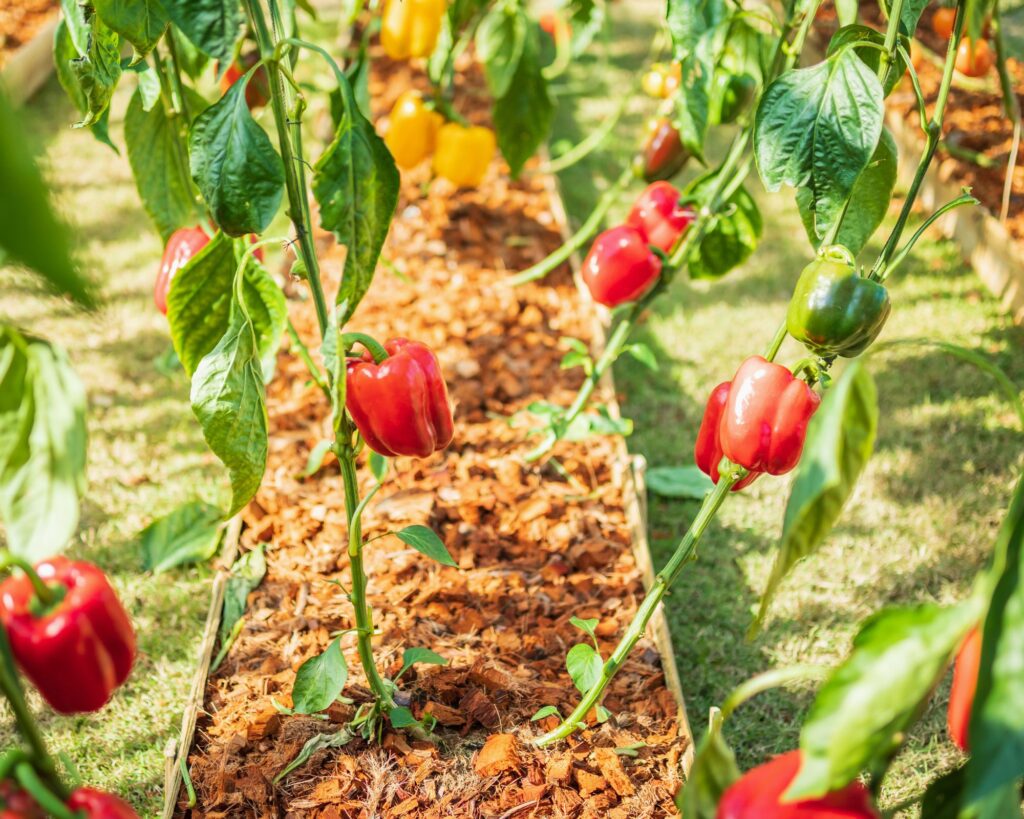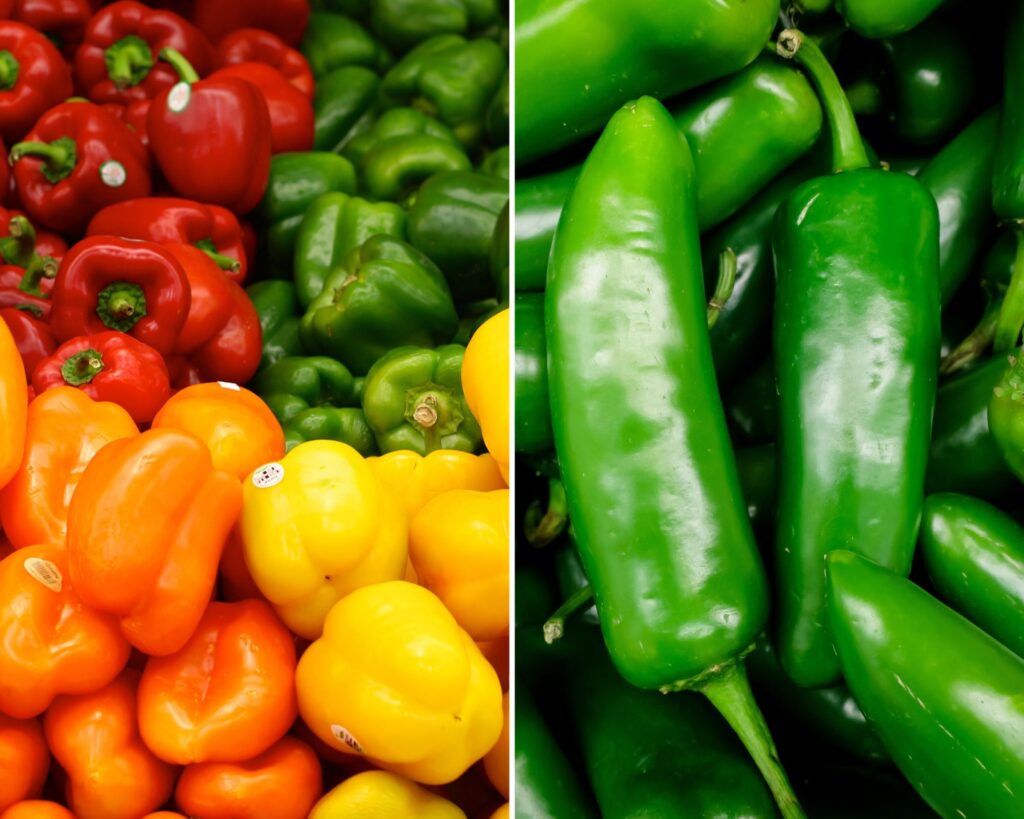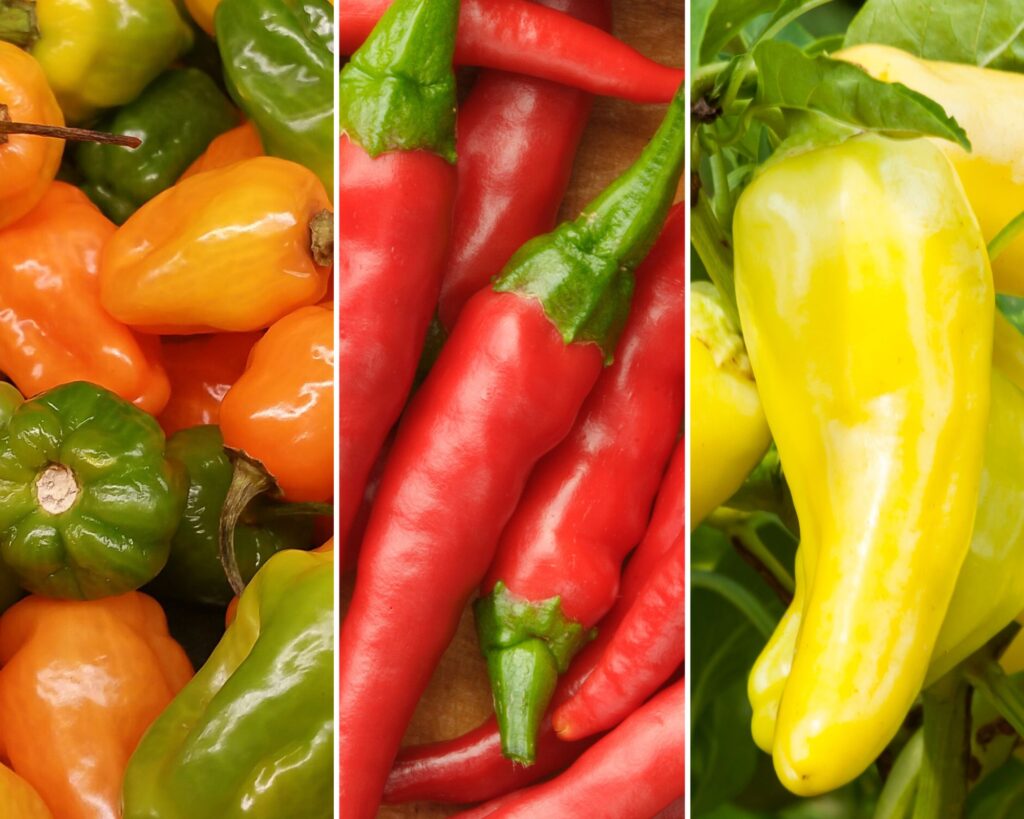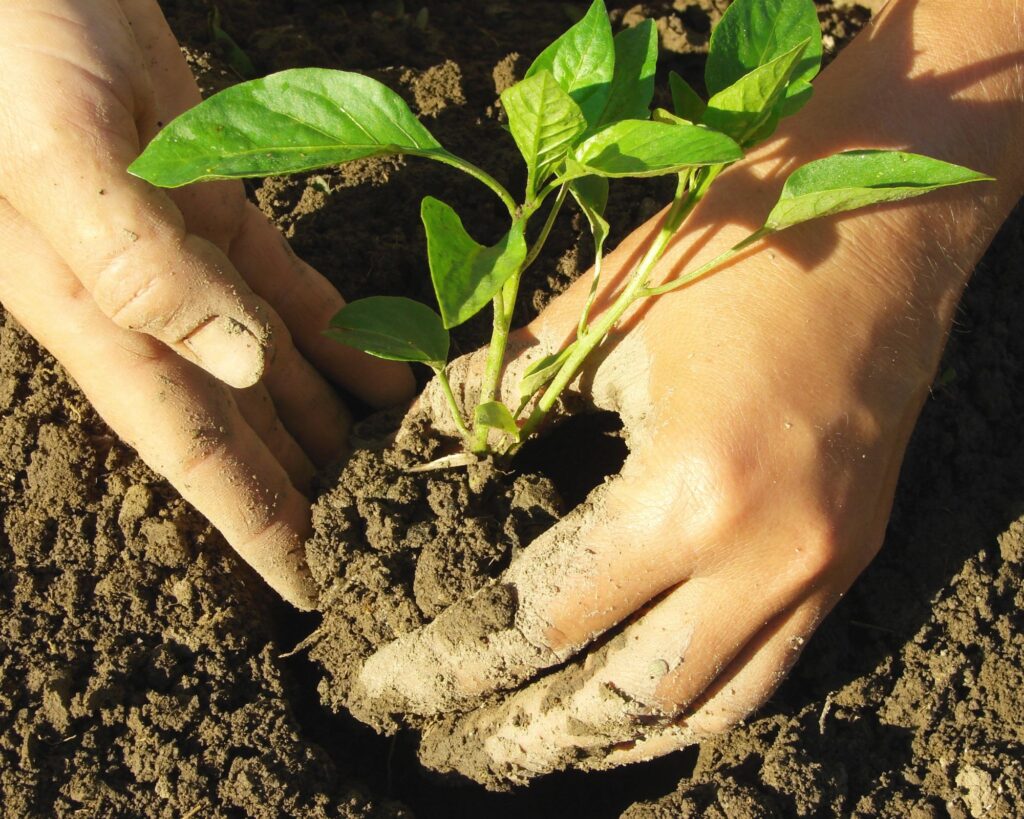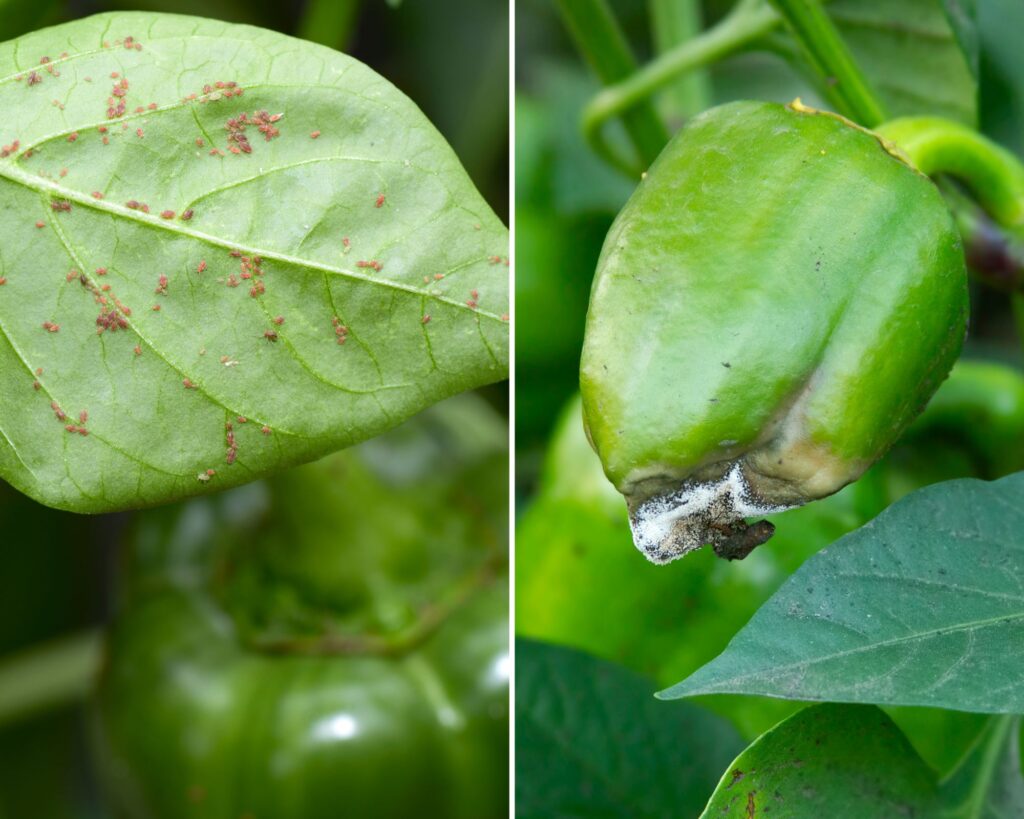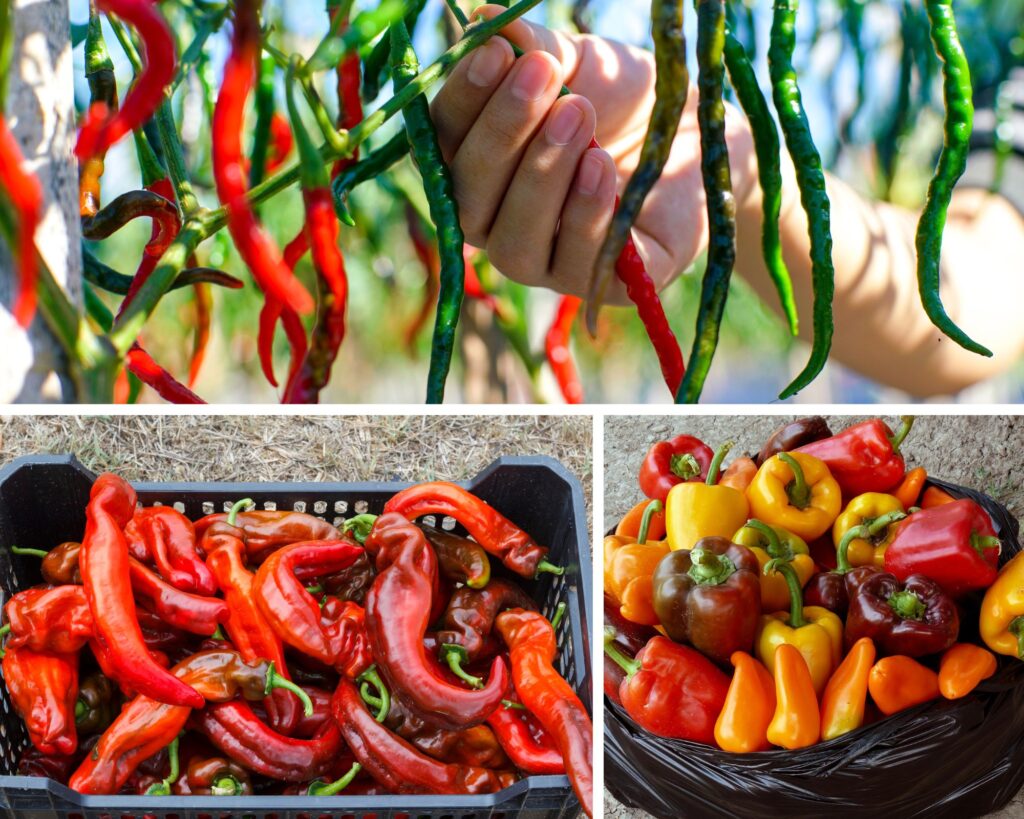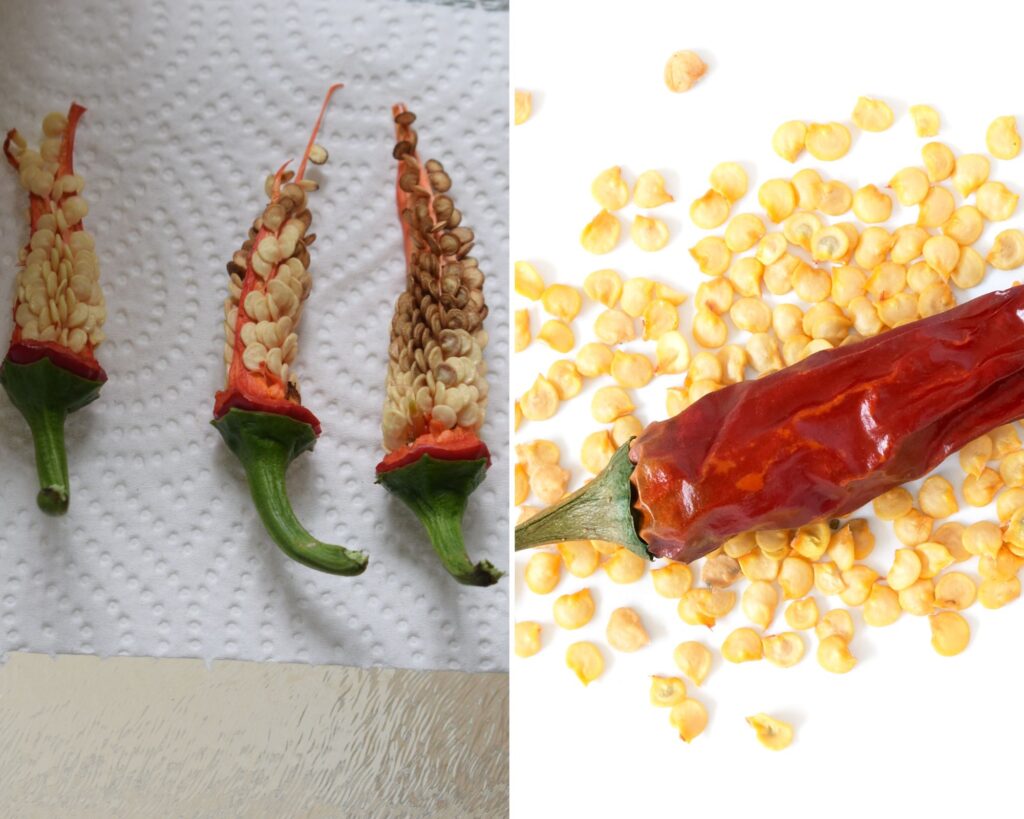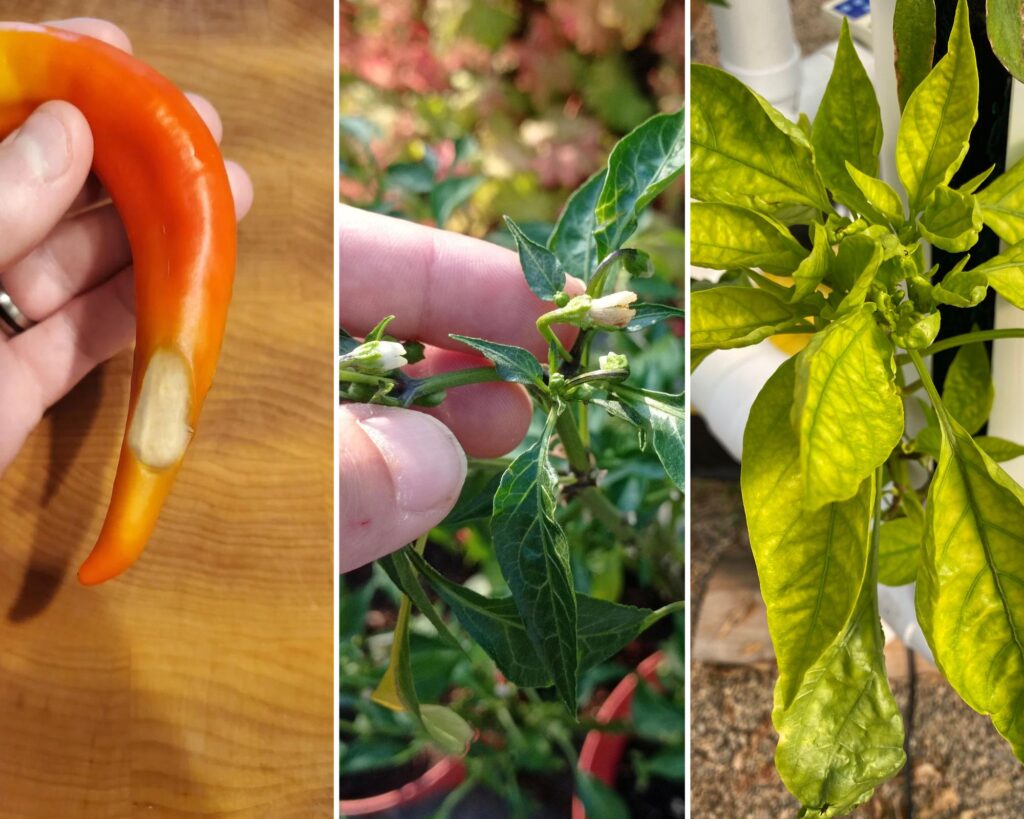Peppers are the vibrant gems of the garden, offering not just a feast for the eyes, but an explosion of flavor for your palate. Whether you’re craving the crisp, refreshing taste of bell peppers or the intense, fiery heat of chilies, growing your own is the ultimate way to spice up your cooking.
This guide is your key to mastering the art of pepper cultivation, from choosing the perfect varieties to harvesting a bumper crop that will elevate your dishes to new heights.
Why Grow Peppers?
Peppers are not only delicious but also packed with nutrients. They are an excellent source of vitamins A and C, potassium, folic acid, and fiber. Additionally, peppers are relatively easy to grow and can thrive in a variety of climates, making them an ideal choice for both novice and experienced gardeners.
Growing your own peppers also allows you to experiment with different varieties that might not be readily available in stores. From the mild and sweet to the intensely hot, there’s a pepper variety for every palate.
Selecting the Right Pepper Varieties
The first step in growing peppers is selecting the right variety for your garden. Peppers come in a wide range of colors, shapes, and heat levels. Here’s a brief overview of some popular types:
1. Bell Peppers
- Description: Sweet, mild peppers that come in green, red, yellow, orange, and even purple varieties.
- Best For: Salads, stir-fries, grilling, and stuffing.
- Growing Tip: Bell peppers are typically larger and require a longer growing season.
2. Jalapeños
- Description: Medium-sized, moderately hot peppers with a bright green to red color.
- Best For: Salsas, pickling, and adding a kick to various dishes.
- Growing Tip: Jalapeños are fairly easy to grow and have a short maturity time.
3. Habaneros
- Description: Small, lantern-shaped peppers known for their intense heat and fruity flavor.
- Best For: Hot sauces, marinades, and spicy dishes.
- Growing Tip: Habaneros require warm temperatures and a long growing season.
4. Cayenne Peppers
- Description: Long, thin, and fiery hot, cayenne peppers are commonly used in powdered form.
- Best For: Drying, making hot sauces, and adding heat to recipes.
- Growing Tip: Cayenne peppers are prolific producers and can be grown in containers.
5. Banana Peppers
- Description: Mild, tangy peppers that are pale yellow to red.
- Best For: Pickling, salads, and sandwiches.
- Growing Tip: These peppers are fast-growing and ideal for beginners.
Preparing the Soil
Peppers thrive in well-drained, nutrient-rich soil with a pH between 6.0 and 7.0. To prepare your soil for planting, follow these steps:
- Test the Soil: Use a soil test kit to determine the pH and nutrient levels of your garden soil. Adjust the pH if necessary by adding lime to raise it or sulfur to lower it.
- Amend the Soil: Work in compost or well-rotted manure to improve soil fertility and structure. Peppers benefit from organic matter that enhances moisture retention while ensuring good drainage.
- Choose the Right Location: Peppers need full sun to produce well. Select a spot in your garden that receives at least 6-8 hours of direct sunlight daily.
Planting Peppers
Peppers can be started from seeds indoors or purchased as young plants from a nursery. Here’s how to plant peppers:
1. Starting Seeds Indoors
- Timing: Start pepper seeds indoors 8-10 weeks before the last expected frost date in your area.
- Sowing: Sow seeds 1/4 inch deep in seed-starting mix. Keep the soil moist and warm (70-80°F) to ensure good germination.
- Transplanting: Once the seedlings have developed two sets of true leaves, they can be transplanted into individual pots. Harden them off by gradually exposing them to outdoor conditions over 7-10 days before transplanting them into the garden.
2. Planting Young Plants
- Timing: Transplant young pepper plants into the garden after the danger of frost has passed and the soil has warmed to at least 65°F.
- Spacing: Space pepper plants 18-24 inches apart, depending on the variety. Allow 24-36 inches between rows.
- Planting Depth: Plant peppers at the same depth they were growing in their pots. Avoid burying the stem too deep, as peppers can be susceptible to stem rot.
3. Companion Planting
- Good Companions: Basil, carrots, onions, and spinach can benefit pepper plants by repelling pests or enhancing growth.
- Avoid: Keep peppers away from fennel and kohlrabi, as they can inhibit pepper growth.
Caring for Pepper Plants
Proper care during the growing season is essential for a successful pepper harvest. Here are key tips for maintaining healthy pepper plants:
1. Watering
- Consistency: Peppers need consistent moisture, especially during flowering and fruiting. Water deeply once or twice a week, depending on rainfall, to keep the soil evenly moist.
- Mulching: Apply a layer of mulch around your plants to help retain soil moisture and regulate temperature.
2. Fertilizing
- Initial Feeding: At planting time, incorporate a balanced fertilizer or compost into the soil to provide essential nutrients.
- Side-Dressing: Once peppers start flowering, apply a low-nitrogen fertilizer to encourage fruit production rather than excessive foliage growth.
3. Pruning and Staking
- Pruning: Remove the lower leaves and any small suckers (shoots that grow in the crotch of a branch) to improve air circulation and prevent disease.
- Staking: Tall or heavy-fruiting varieties may need support to prevent the plants from bending or breaking. Use stakes or cages to keep plants upright.
4. Pest and Disease Control
- Common Pests: Aphids, spider mites, and pepper weevils are common pests that can affect pepper plants. Use insecticidal soap or neem oil to control infestations.
- Disease Prevention: Peppers are susceptible to fungal diseases like blight and powdery mildew. To prevent these, water at the base of the plants rather than overhead and ensure good air circulation by spacing plants properly.
Harvesting Peppers
Knowing when and how to harvest peppers is key to enjoying the best flavor and yield from your plants.
1. When to Harvest
- Bell Peppers: Harvest when they reach full size and have a glossy appearance. You can pick them green or wait for them to turn red, yellow, or orange for a sweeter flavor.
- Jalapeños: Pick when they are firm and bright green, or leave them to ripen to red for a slightly sweeter, hotter taste.
- Habaneros and Cayennes: Harvest when they have fully ripened and changed color, typically from green to orange, red, or yellow.
2. How to Harvest
- Using Scissors or Pruners: Use scissors or garden pruners to cut the peppers from the plant, leaving a small portion of the stem attached. This prevents damage to the plant and promotes continued production.
- Harvest Regularly: Regular harvesting encourages the plant to produce more fruit. If you leave peppers on the plant for too long, they can become tough and reduce overall yield.
Saving Pepper Seeds
If you want to grow the same variety of peppers next season, you can save seeds from your harvest. Here’s how:
1. Selecting Seeds
- Choose the Best: Select fully ripe, healthy peppers for seed saving. The seeds from these fruits are more likely to be viable.
- Open-Pollinated Varieties: Save seeds from open-pollinated (non-hybrid) varieties to ensure the same traits are passed on.
2. Drying Seeds
- Remove and Clean: Cut open the pepper and remove the seeds. Spread them out on a paper towel or screen to dry in a warm, well-ventilated area.
- Storage: Once completely dry, store the seeds in a paper envelope or airtight container. Label them with the variety and date, and keep them in a cool, dark place until planting next season.
Troubleshooting Common Issues
Even experienced gardeners can run into challenges when growing peppers. Here are some common problems and solutions:
1. Blossom End Rot
- Symptoms: Dark, sunken spots on the bottom of the fruit.
- Cause: Calcium deficiency, often caused by irregular watering.
- Solution: Maintain consistent soil moisture and consider adding calcium to the soil.
2. Poor Fruit Set
- Symptoms: Plants flower but produce few or no fruits.
- Cause: High temperatures, poor pollination, or excessive nitrogen.
- Solution: Ensure proper spacing for air circulation, avoid over-fertilizing, and provide shade during extreme heat.
3. Yellowing Leaves
- Symptoms: Leaves turn yellow, especially at the bottom of the plant.
- Cause: Overwatering, nutrient deficiency, or pests.
- Solution: Check soil drainage, adjust watering, and apply a balanced fertilizer. Inspect for pests and treat accordingly.
Growing peppers is a rewarding experience that offers a wealth of flavors and culinary possibilities. By selecting the right varieties, preparing your soil, and providing proper care, you can enjoy a bountiful harvest of fresh, homegrown peppers. Whether you’re growing sweet bell peppers for a salad or fiery habaneros for a homemade hot sauce, this guide provides all the essential steps to ensure a successful pepper-growing season.
So, grab your gardening gloves, pick your favorite pepper varieties, and start planting! With a little patience and attention, you’ll soon be enjoying the fruits (or rather, vegetables) of your labor.

